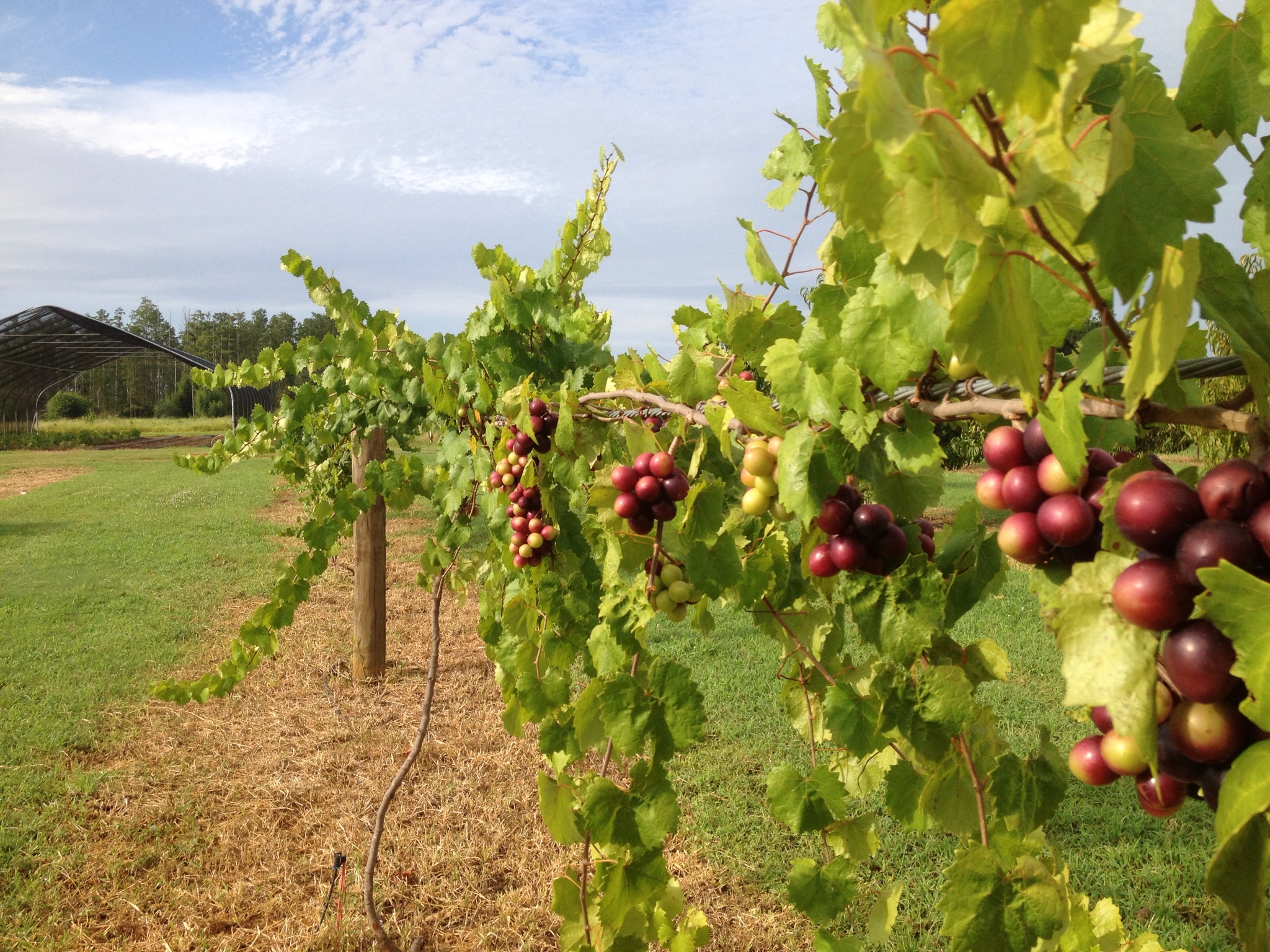
by Blake Thaxton | Jul 22, 2013
Fruit trees are a wonderful addition to the landscape at home or even a great niche for the small farmer.

Most people love the thought of picking fresh fruit off of the tree or vine and knowing exactly where it comes from. There are a lot of considerations that must be taken into account for a homeowner looking to spice up the landscape or the small farmer looking to diversify their operation.
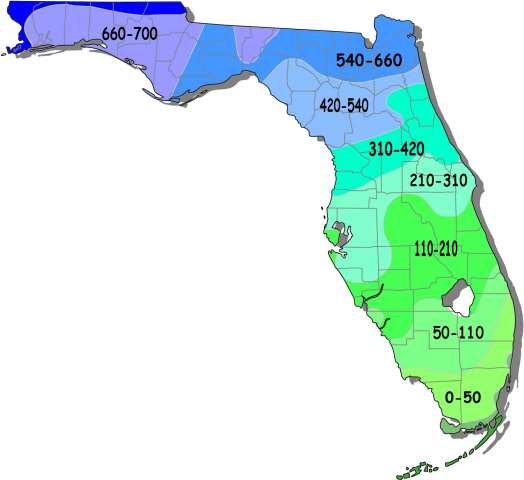 Chill Requirements:
Chill Requirements:
Deciduous trees have a chilling requirement in order to flower and produce fruit. Species and cultivars will have their own number of chill hours that must be met. Chill units are the estimated accumulative number of hours at 45°F or under during the dormant season. The Panhandle of Florida receives the most chill units in the state, therefore allowing more of a selection of fruit trees.
Disease Pressures:
Pecan, Peach/Nectarine, Plum, Bunch Grape, Apple, and Pear all have high disease pressures in the climate of the Florida Panhandle. Peach and Nectarine, for example, have a high number of necessary fungicide sprays required for high quality fruit. Mushroom root rot, peach scab, bacterial leaf spot, and brown rot are a few diseases of Peach and Nectarine. The other fruits mentioned have a similar list of disease problems that demand frequent and timely applications of fungicides.
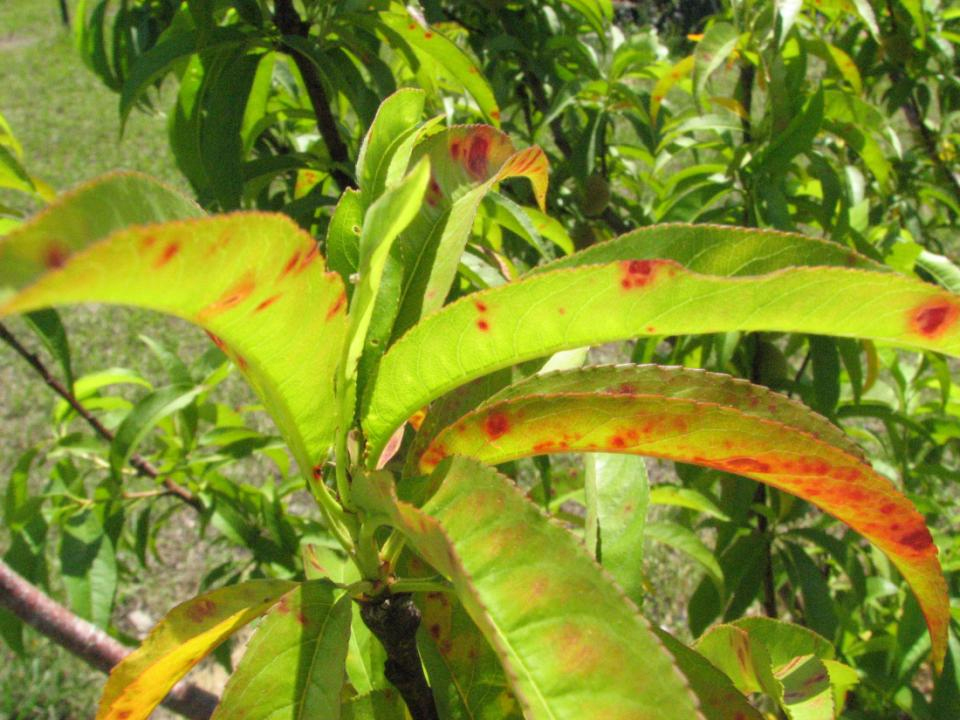
Peach tree affected by Bacterial Leaf Spot symptoms. Photo by G. England.
Along with disease pressures and chilling requirements, there are other factors that have to be taken into account before installing fruit trees in Northwest Florida. The sustainability of fruit trees in North Florida can be read about further in this UF/IFAS publication. In the publication, proper varieties and cultivars are listed for the fruit crops discussed. To learn more about fruit culture in Florida, please take a look at the following linked publications.
If questions arise about whether a certain fruit crop can be grown in the Florida Panhandle, contact your local extension agent.
by Matthew Orwat | May 9, 2013
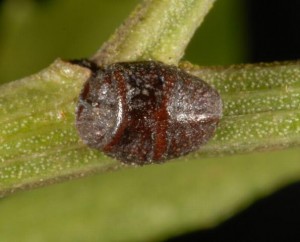
Adult Scale – Image Courtesy Lyle Buss
Many different species of scale insect infect citrus in North Florida, and mid spring is usually when gardeners notice them on their fruit trees and ornamental shrubs. Many different species of scale affect Florida homeowners and cause a host of problems in the garden and landscape. Citrus is particularly prone to scale infestations in North Florida.
The Satsuma Tangerine, Citrus unshiu, is currently a fruit that is highly prized by home gardeners in North Florida. Now is the time to act to prevent heavy scale infestations since weather is warming and control methods cannot be used when daytime temperatures are very hot. This pest has already been observed at multiple locations throughout the Florida Panhandle in both home gardens and commercial production areas.
Scale often reduces tree vitality by ingesting sap that would otherwise be used by the tree for growth and fruit production. They may also cause premature fruit drop and defoliation. A secondary pest that may occur as result of Scale is Sooty Mold. Sooty Mold lives off of the surgery secretions of the scale and can cause citrus leaves to look black and eventually drop.
The good news is that Scale is relatively easy to control when managed in winter or early in the spring growing season. From October through mid-May growers should use Horticultural Oil to control scale, particularly horticultural oil containing petroleum products. These products deprive scale insects of oxygen. This will smother them, but dead insects will need to be washed off if complete removal is desired.
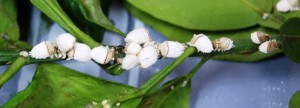
Cottony Cushion Scale – Image Courtesy Matthew Orwat
Applications should be timed correctly since horticultural oil applications can burn plants once the outdoor temperature reaches 94 ® F. A good rule of thumb is to apply horticultural oil on cool and cloudy days to minimize leaf damage. Always consult the label of each individual product before application and never apply more than the recommended amount. This last statement is especially crucial for horticultural oil applications, since increased rates are highly likely to damage plants. For more information, please consult this UF / IFAS publication on Citrus Scale and the Citrus Pest Management Guide.
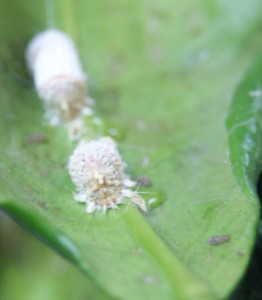
Cottony Cushion Scale – Image Courtesy Matthew Orwat

 Chill Requirements:
Chill Requirements:



